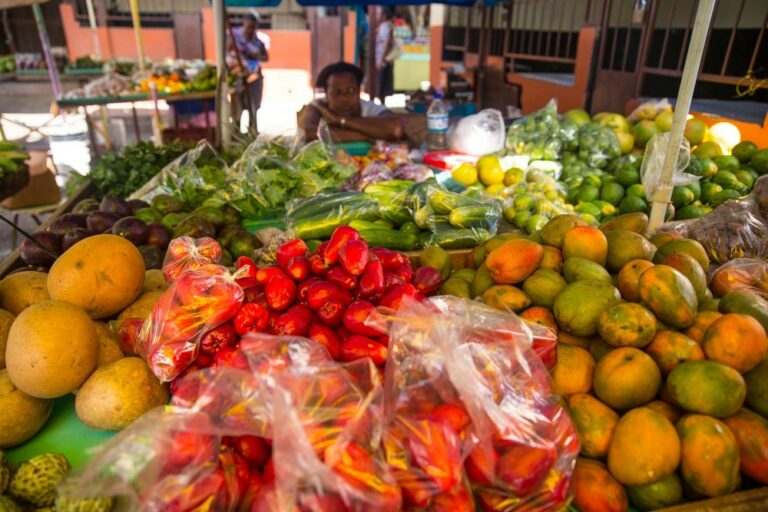Introduction: Exploring Saint Lucian cuisine
Saint Lucia, a small island nation located in the Caribbean Sea, is known for its delicious and unique cuisine. The country’s rich history and cultural diversity have had a significant influence on its culinary traditions. Saint Lucian cuisine is characterized by its use of locally sourced fruits, vegetables, and spices that add unique flavors and a distinctive taste to every dish.
Local fruits: Adding flavor and nutrition to dishes
Saint Lucia is blessed with an abundance of tropical fruits, which are an essential ingredient in many of the country’s traditional dishes. Mangoes, guavas, papayas, and pineapples are some of the most popular fruits used in Saint Lucian cooking. These fruits are not only juicy and delicious but also packed with nutrients like vitamin C, fiber, and antioxidants. They add a sweet and tangy flavor to dishes, making them more flavorful and nutritious.
The use of local fruits in cooking is not limited to savory dishes only. In Saint Lucia, fruits are also used in desserts and drinks. For example, mangoes are used to make mango chutney, mango juice, and mango sorbet. Pineapples are used in pineapple upside-down cake and pineapple rum punch. These desserts and drinks are a perfect way to end a meal or refresh yourself on a hot day.
Vegetables: The backbone of Saint Lucian cooking
Vegetables are another essential component of Saint Lucian cuisine. They are used in almost every meal and add a variety of textures and flavors to dishes. Some of the popular vegetables used in Saint Lucian cooking include plantains, yams, okra, and callaloo (a leafy green vegetable). These vegetables are not only delicious but also provide essential nutrients like fiber, potassium, and vitamins.
In Saint Lucia, vegetables are often prepared by boiling, roasting, or frying. A popular dish in Saint Lucia is callaloo soup, which is made with callaloo, okra, coconut milk, and spices. Another popular dish is green fig and saltfish, which is made with boiled green bananas and salted codfish. Vegetables are also used in stews and curries, which are popular dishes in Saint Lucia.
Spices: A history of trade and cultural influence
Saint Lucian cuisine is known for its bold and flavorful spices, which are a result of the country’s history of trade and cultural influence. The island’s proximity to other Caribbean islands, Europe, and Africa has led to a fusion of different culinary traditions. The use of spices like nutmeg, cinnamon, cloves, and ginger in Saint Lucian cooking reflects this fusion of flavors.
Spices are used in Saint Lucian cuisine to add flavor and depth to dishes. They can be used in marinades, rubs, and sauces to enhance the taste of meats and vegetables. For example, nutmeg is used in fish cakes, while cinnamon is used in sweet potato pudding. These spices not only add flavor but also have many health benefits.
Traditional dishes: Some examples of local cuisine
Saint Lucia has a rich culinary tradition with many traditional dishes that are popular among locals and visitors alike. Some of the most famous dishes include fish cakes, callaloo soup, green fig and saltfish, and bouyon (a stew made with meat, vegetables, and dumplings). These dishes highlight the use of local fruits, vegetables, and spices, which add unique flavors and textures to the dishes.
In addition to these dishes, Saint Lucia is also known for its street food, which is a fusion of African, European, and Caribbean flavors. Some of the popular street foods include johnny cakes (fried dough), grilled corn on the cob, and fried plantains. These foods are a perfect way to experience the local cuisine while exploring the island.
Conclusion: Embracing the flavors of Saint Lucia
Saint Lucian cuisine is a reflection of the island’s rich history and cultural diversity. The use of local fruits, vegetables, and spices adds unique flavors and textures to dishes, making them not only delicious but also nutritious. From traditional dishes to street food, there are many opportunities to explore the flavors of Saint Lucia and embrace its culinary traditions. Whether you’re a foodie or just looking for a new culinary experience, Saint Lucia has something for everyone.

